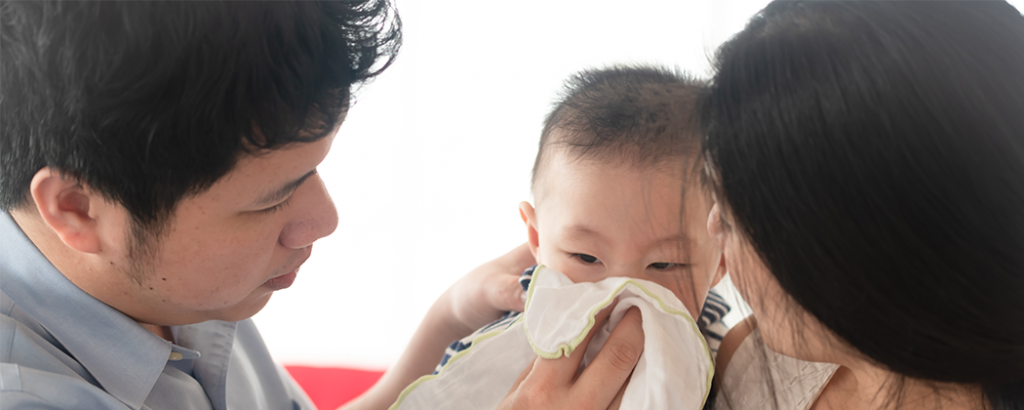
Information about pertussis is also available in Spanish.
According to the Minnesota Department of Health, there have been 555 total number of pertussis cases reported as of Dec. 31, 2019. Pertussis, or whooping cough, is a serious disease that can be deadly to infants. One Minnesota infant died of pertussis in 2019, which was the first death since 2013.
Pertussis is an infection of the respiratory system caused by bacteria. It mainly affects babies younger than 6 months old who aren’t yet protected by immunizations, and kids 11 to 18 years old whose immunity has started to fade.
How do I know if my child has pertussis?
The signs of pertussis oftentimes look like the common cold. They include: a runny nose, sneezing, mild cough and a low-grade fever. The illness will then evolve into an intense coughing spells, which can last for more than a minute. At the end of the spell, your child may make a ‘whooping’ sound when breathing in.
However, not all infants and young children with whooping cough will make the ‘whooping’ sound after a spell. It may look as if they are gasping for air and may turn red or purple.
How can I prevent pertussis?
The best way to prevent your child from getting pertussis is to vaccinate in early childhood with the Dtap (diphtheria, tetanus, acellular pertussis) immunization. Mothers in their last trimester of every pregnancy should get the Tdap (tetanus, diphtheria and pertussis) booster. This vaccine will protect not only the mother from pertussis but also their soon-to-be newborn baby. When getting wound care for stitches, the tetanus booster usually given will now include the pertussis booster in Tdap.
Other ways to protect your child from getting pertussis include:
- All babies should follow the Centers for Disease Control and Prevention schedule for pertussis. This starts the pertussis series at two months old.
- Teens should get a Tdap booster.
- Every 10 years, people normally get a tetanus booster but now it can be covered with Tdap for additional pertussis coverage.
- When your child gets a wound, your physician will give them a Tdap booster rather than just the tetanus booster.
What should I do if I suspect my child has pertussis?
Call your pediatrician if you think your child might have pertussis or they’ve been exposed to someone with whooping cough, even if they have all their scheduled immunizations. Whooping cough can be treated with antibiotics. Some kids, especially babies and younger children, with pertussis need to be treated in the hospital because they are at a greater risk for problems like pneumonia. Pertussis can be life-threatening for infants younger than 6 months, so they are almost always hospitalized.
During pregnancy, there are a lot of things a physician will tell mothers not to eat, not to drink or not to do, but in the case of pertussis, getting the Tdap booster in the last trimester of pregnancy is something moms can do that will protect them and their newborn.
If your child has been diagnosed with whooping cough and is being treated at home, get immediate medical care if he or she develops difficulty breathing or shows signs of dehydration.
Children’s talks with KARE 11 about pertussis
Patsy Stinchfield, nurse practitioner and senior director of infection control at Children’s, talked with KARE 11 about the recent death of a Minnesota child due to pertussis. “Whooping cough is bad. You can die from it,” Stinchfield said. “And that’s why we vaccinate.”
Find a Children’s clinic or hospital
Find a Children’s Minnesota clinic or hospital near you if you think your child has pertussis or has been exposed to pertussis. In case of a medical emergency, bring your child to the emergency department or call 9-1-1.